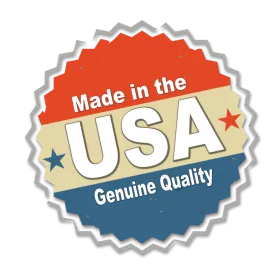To the consternation of many, California law has long imposed a “Made in the U.S.A.” standard that has been more stringent than the federal standard, requiring manufacturers of all types who wanted to make a country of origin claim to adopt dual sets of packaging and labeling materials – one for California and one for the rest of the country. But California has now amended its “Made in the U.S.A. law” and taken a step toward the mainstream. On Tuesday, September 1, California Governor Jerry Brown signed into law Senate Bill 633, amending a portion of California’s Business & Professions Code known as the “Made in the U.S.A.” law. This amendment marks a break for California manufacturers and marketers, as it relaxes California’s standard for merchandise labeled as “Made in the U.S.A.” and aligns the state’s requirement more closely with the federal standard, widely followed by other states.
The Federal Trade Commission (“FTC”) standard for products labeled and marketed as “Made in the U.S.A.” requires that “all or virtually all” of a product be made in the United States, examining the foreign content of a product as a whole. According to the FTC’s guidelines, “all or virtually all” means that “all significant parts and processing that go into the product must be of U.S. origin,” or “the product should contain no — or negligible — foreign content.”
Up until now, the state of California has implemented a stricter standard, prohibiting the use of the phrase “Made in the U.S.A.” when any merchandise or “any article, unit, or part thereof”—no matter how small—has been “made, manufactured, or produced outside of the United States.” And as is often the case when different standards are imposed on goods that are distributed nationally, that stricter California standard has exposed many unsuspecting manufacturers to litigation, some of which remains pending. Discussing this standard, the California Supreme Court, in Kwikset Corp. v. Superior Court, 51 Cal. 4th 310, 246 P.3d 877 (2011), emphasized that “labels matter,” and “[i]n particular, to some consumers, the ‘Made in U.S.A.’ label matters.” Kwikset had marketed its locksets with “Made in the U.S.A.” and similar designations, even though some the products contained screws or pins made in Taiwan and some components were assembled in Mexico. The California Supreme Court held that the plaintiff in that case had standing to sue under the state’s Unfair Competition Law and False Advertising Law solely based on the allegation that the plaintiff bought a product purportedly “Made in the U.S.A.” when that product “in fact contained foreign-made parts or involved foreign manufacture,” giving the California standard more teeth and rejecting the argument in that case that there needed to be an allegation of a real economic injury to confer standing.
California’s new amendment, Senate Bill 633, now recognizes that merchandise made, manufactured, or produced in the United States can be labeled “Made in the U.S.A.” even if it includes one or more articles, units, or parts from outside of the United States. In particular, merchandise can be labeled “Made in the U.S.A.” “if all of the articles, units, or parts of the merchandise obtained from outside the United States constitute not more than 5 percent of the final wholesale value of the manufactured product.” Additionally, merchandise can be labeled “Made in the U.S.A.” “if the manufacturer makes a showing that it cannot produce or obtain a certain article, unit, or part” within the United States for reasons other than cost and that the article, unit, or part does not constitute more than ten (10) percent of “the final wholesale value of the manufactured product.”
Manufacturers will, of course, still need to go through the exercise of determining if their products meet the new California standard, and it’s not entirely clear how this new standard will affect pending litigation that was filed under the old standard. But going forward, this recent amendment should help reduce the number of instances where manufacturers have to create one set of labeling materials for California and another set for the rest of the country.



 />i
/>i
